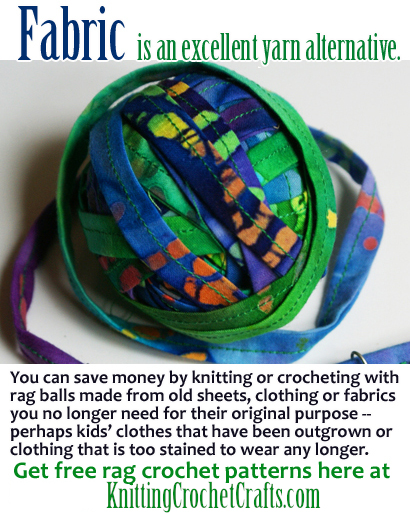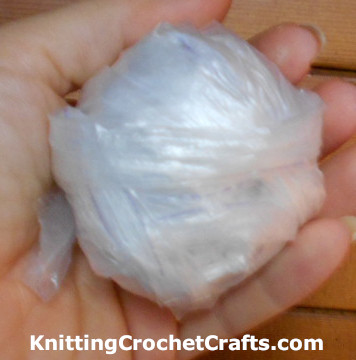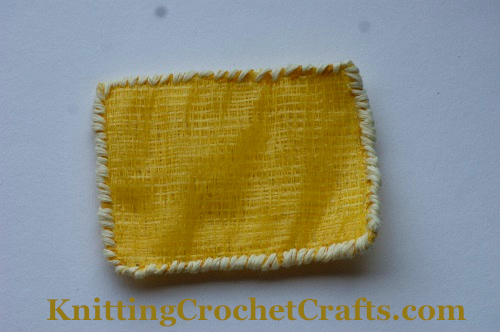These tips could help you to save a bundle on your crochet or knitting habit!
On the one hand, crochet and knitting are reasonably affordable hobbies. If you aren’t a “yarn snob,” you only have to spend a few bucks* on a ball of yarn and a couple more dollars* on a crochet hook or pair of knitting needles to get started.
On the other hand, a few bucks* here and a few more there, over time can add up to a great big bundle of cash.
[*or Pounds / Euros / Shekels (etc.) — insert currency of your choice.]
With that in mind, let’s take a look at some money-saving ideas you can put to use to cut the costs on your crochet or knitting “habit.”
Tip #1: Use Free Knitting and Crochet Patterns
There are plenty of patterns available on the Internet. Some you have to pay for, and some you don’t. If you take advantage of all the free ones, it could potentially save you a bundle!
You can also find bunches of free tutorials and free videos too.
Tip #2: Be Ultra Careful With Your Selection of Free Knitting and Crochet Patterns
Sometimes free crochet patterns aren’t really a bargain after all. There are a couple of pitfalls you really have to look out for.
One is that yarn manufacturers make bunches of free patterns available because patterns drive yarn sales. This isn’t a bad thing at all; it’s the nature of commerce. But, when you decide which pattern to use, it’s a good idea to keep in the back of your mind that the yarn company’s goal is to sell you more yarn, and not necessarily to give you a bargain on your project. It’s always a good idea to view patterns by several sources, including independent designers and pattern book publishers, in addition to free yarn company patterns. Keep in mind that you might spend less on all combined aspects of your project if you use a pay-for pattern that guides you to a better overall bargain on materials than the free pattern would.
One other caveat: Not every pattern is designed by an expert who is a great communicator. Many of the patterns that are available have errors, confusing parts, and parts that are incomplete. It’s possible to waste a lot of time, and sometimes even yarn, on patterns that are not worthy of your efforts.
This isn’t an issue specifically with free patterns. There are fantastic, well-tested free patterns, and there are also terrible, poorly-tested patterns you have to pay for.
That said, you’re likelier to get a good pattern if you buy one that has been tech edited by someone other than the original designer, and tested by multiple pattern testers. And most of the time, unless you’re using a yarn company’s free patterns, tech edited patterns do cost money. That’s because tech editors don’t generally work for free. It’s generally worth spending a few bucks on a well tested, tech edited pattern — especially in cases where you’d be dropping a bundle on the yarn for the project in question.
Your odds of happening upon a time-waster of a pattern are greater if you only use free patterns. However, you can increase your likelihood of enjoying success with free patterns if you stick to using patterns that a whole bunch of other crafters have used successfully to make completed projects.
Tip #3: You Can Use Worn-Out Clothes, Sheets and Linens as Knitting and Crochet Supplies.

Pictured here: rag balls for knitting or crocheting. You can make rag balls like these by cutting old sheets into strips and rolling them up for use in your knitting and crochet projects. We have provided free patterns and tutorials for crocheting with fabric, including a rag rug pattern and more.
Tip #4: You Can Knit and Crochet With Plastic Bags.

You can make “plarn” (plastic yarn) out of the plastic bags you take home from the grocery store. Plarn is good for making pouches, scrubbies, purses, bags and more. When you knit or crochet with plarn, you get a nearly-free project; assuming you already have the knitting needles and crochet hook(s) you need, all you have to pay for is the findings you use for finishing your project (zippers, buttons, snaps, etc.)
See Also: How to crochet without yarn
Tip #5: Discover the Advantages of Cones of Yarn.
Yarn cones can save you money in a couple of different ways, plus they have additional benefits over and above the cost savings. If you aren’t already aware of these benefits, you’ll definitely want to check this article out.
Tip #6: Use or Re-Use Your Gauge Swatches.

How to Make a Scrubbie Out of a Gauge Swatch
There are many different things you can do with your gauge swatches when you are finished with them. Pictured here is one possible idea: It’s a dish scrubbie I made using a no-longer-needed gauge swatch plus a plastic produce bag that was originally used for bagging up organic lemons. You can make similar scrubbies using your old gauge swatches and our free project instructions — check ’em out.
Tip #7: Buy Unwanted “Stash” From Other Crocheters and Knitters.
You can often find deals on yarn and crochet thread that other crafters no longer want. Whenever you have a free moment to spend yarn shopping, check Etsy, Craigslist, and your local thrift stores for bargains.
This works both ways; if you have yarn you no longer want, you can sell it or barter it too.
Tip #8: Make the Most of Your Scrap Yarn.
Most of the time, when you finish a knitting or crochet project, you’ll end up with one or more partial balls of yarn left over. This can be so frustrating. You probably don’t want to throw them away, but at the same time it isn’t always easy to figure out what to do with them.
Check out these scrap yarn patterns to find lots of ideas for using up yarn that’s left over from other projects. That way, none of your leftovers go to waste, and you make the most of the money you’ve already spent on the yarn.
Tip #9: Find Yarn, Supplies and Project Ideas at the Dollar Store.
Sometimes you can find fantastic deals on yarn, beads, and other supplies at the dollar store. I’ve even occasionally been inspired with new project ideas from supplies I found at the dollar store.
Tip #10: Get Yourself a Good Set of Interchangeable Knitting Needles
If you’re a frequent knitter, you could end up spending a small fortune buying a new set of knitting needles every time you begin a new knitting project.
Once you’re sure that knitting is your thing, and that you’re serious about making an investment in knitting supplies, a good set of interchangeable knitting needles will be one of the best investments you could make. It will save you a bundle in the long term over buying individual sets of knitting needles — and it will also save you space and help to keep your knitting organized.
There are many wonderful sources for interchangeable knitting needles, but Knitpicks has some outstanding options that I recommend taking a look at first. One of the things I like about Knitpicks’ needle selection is that they have totally affordable starter sets you can buy to see if you like the concept of interchangeables. From there, it’s also possible to acquire your interchangeables a bit at a time if you can’t afford to splurge on an entire set. But if you’re in the market to buy an entire set, they have bunches of lovely options for different styles and configurations. Check ’em out!
Your Tips for Saving Money on Knitting and Crochet:
Do you have a tip for saving money on knitting or crochet? If so, you’re invited to share it in the comments section below.
All About Knitting and Crochet
- Visit Our Main Directory of Free Crochet Patterns
- Learn How to Crochet — for Total Beginners
- Outstanding Crochet Books You Need to Know About
- Our Picks for the Best New Knitting Books
Discover the Best Crochet Books:
- The Best Crochet Stitch Dictionaries
- The Best Crochet Books for Beginners
- The Best Crochet Baby Pattern Books
- The Best Crochet Blanket Pattern Books
- The Best Crochet Edging Pattern Books
- The Best Books on Crochet Flowers
Learn More About Crochet:
- Click here to find crochet stitch tutorials and instructions.
- Click here to learn more crochet techniques.
- Click HERE to Find Fabulous Yarn for Crochet and Knitting
- Click here to learn about crochet hooks.
- Click here to find my favorite crochet project bag.
Learn About Other Crafts: Knitting, Sewing, Quilting, Paper Crafts and More
- Click here to get updated on the latest craft supplies.
- Click here to learn about knitting.
- Click here to find our beginner’s guide to knitting needles.
- Click here to find outstanding craft project ideas.
Posted By: Amy Solovay
Page last updated on 11-3-2021. Thanks for visiting!